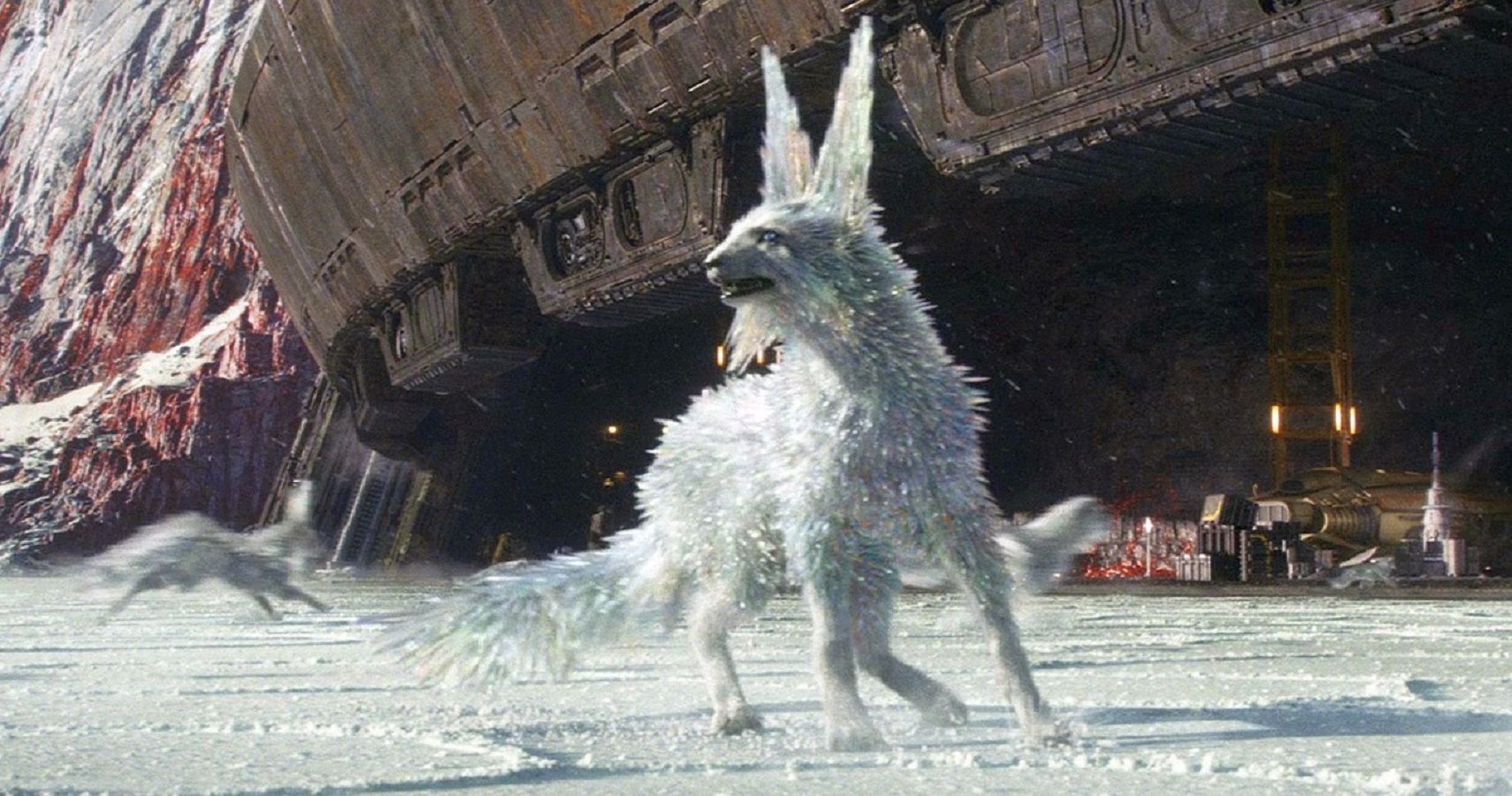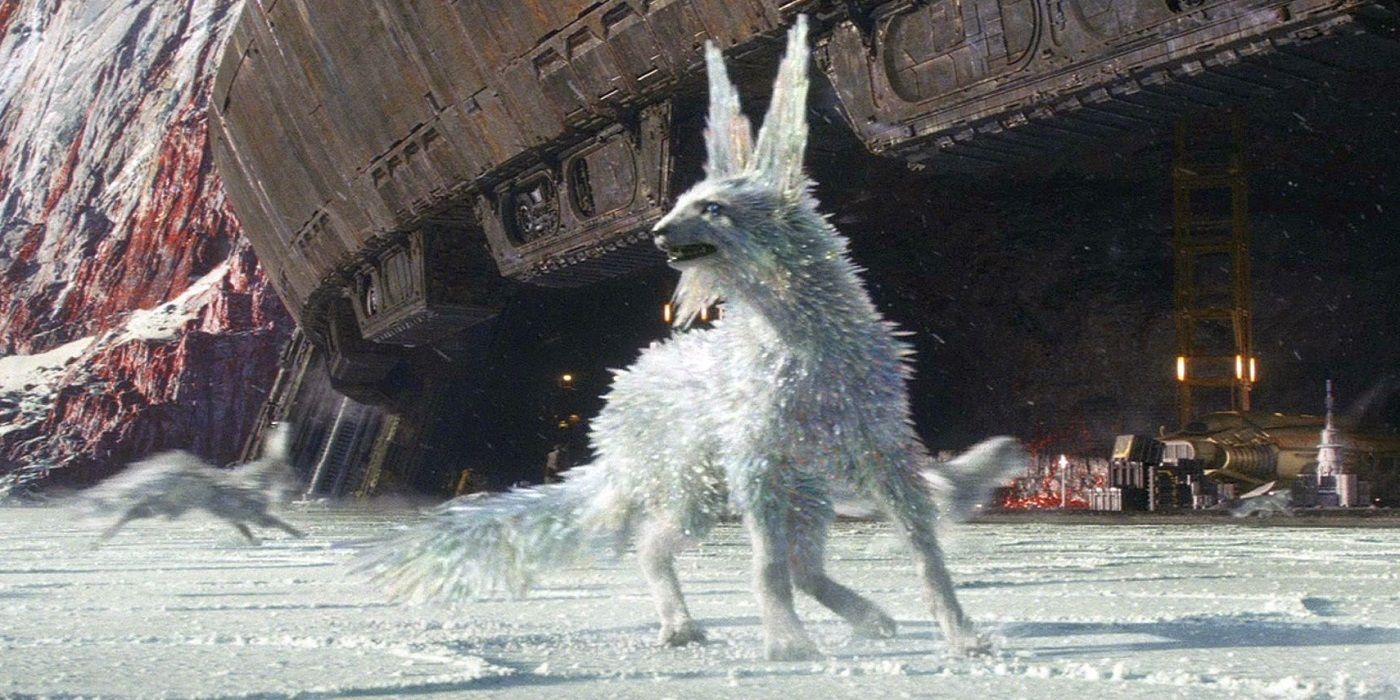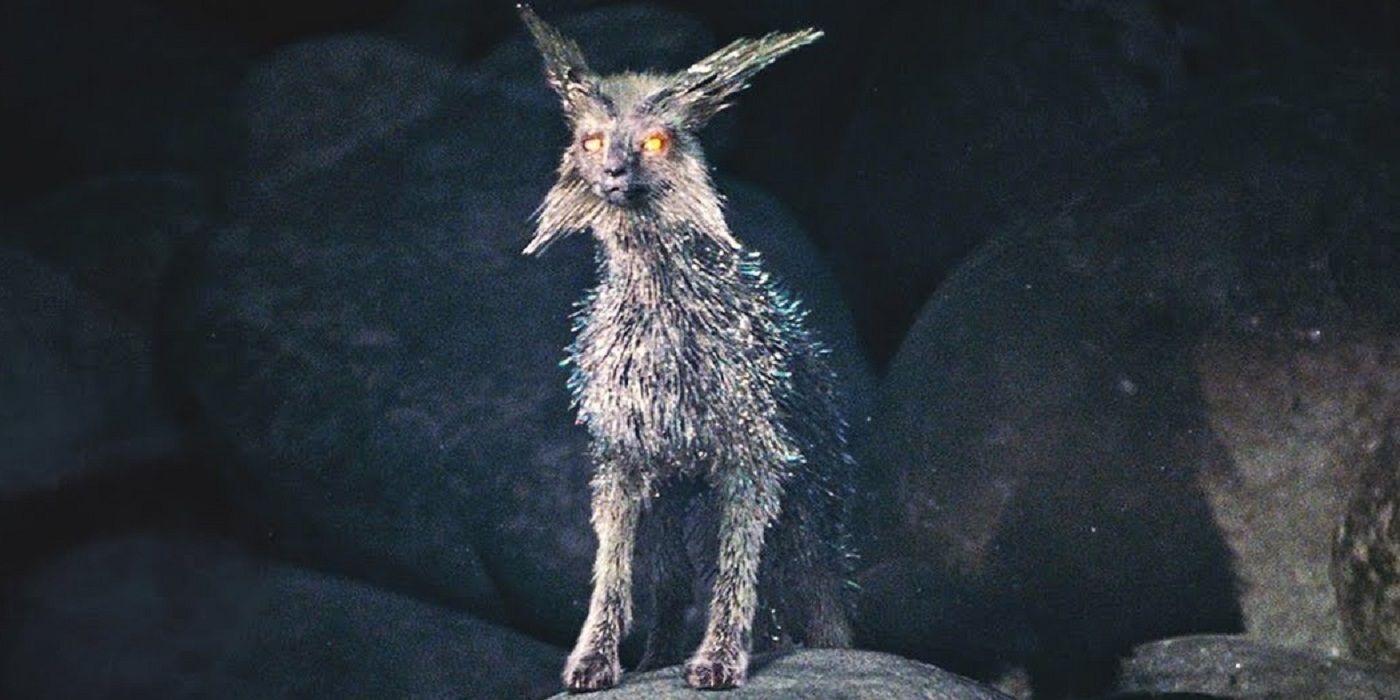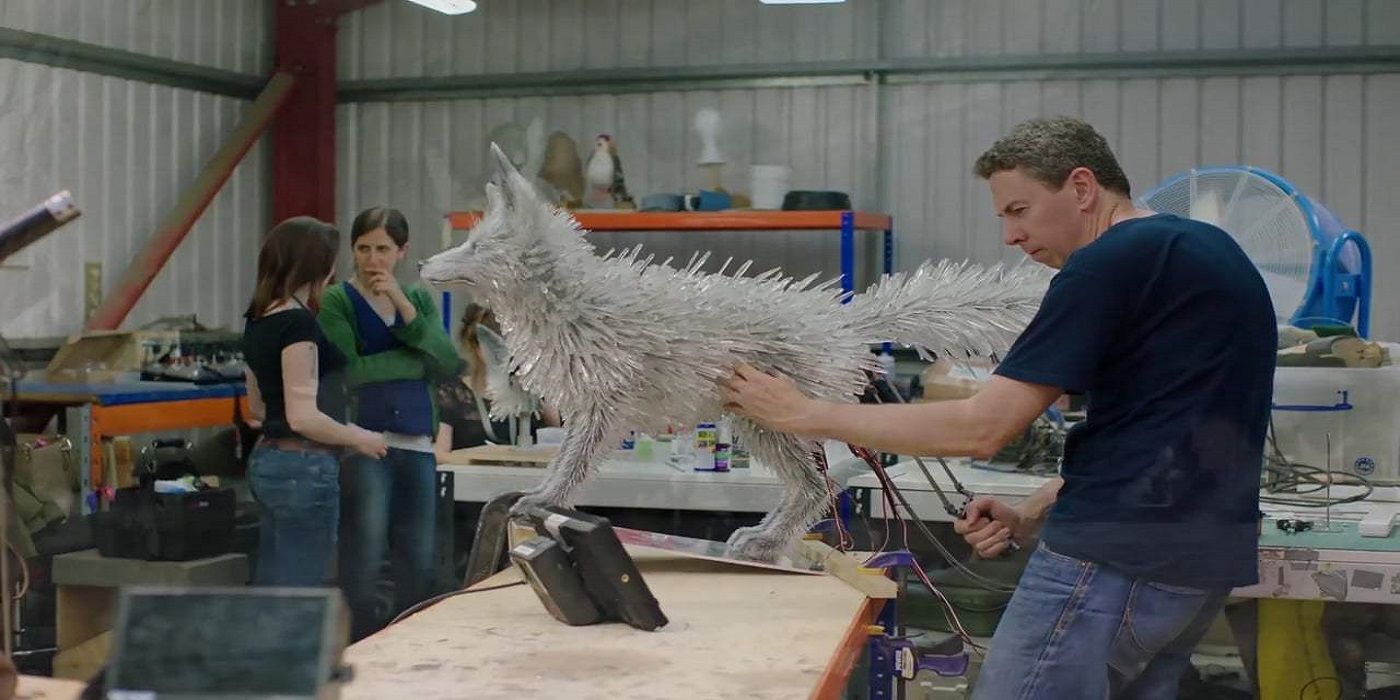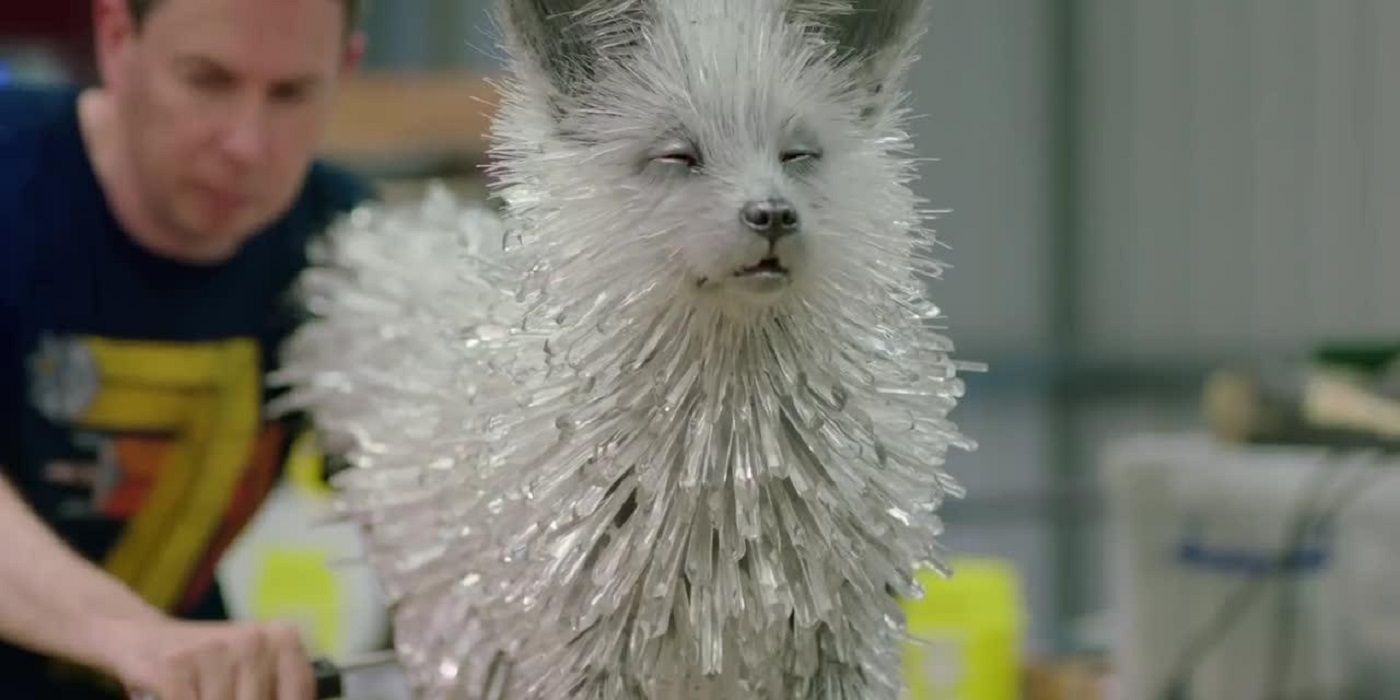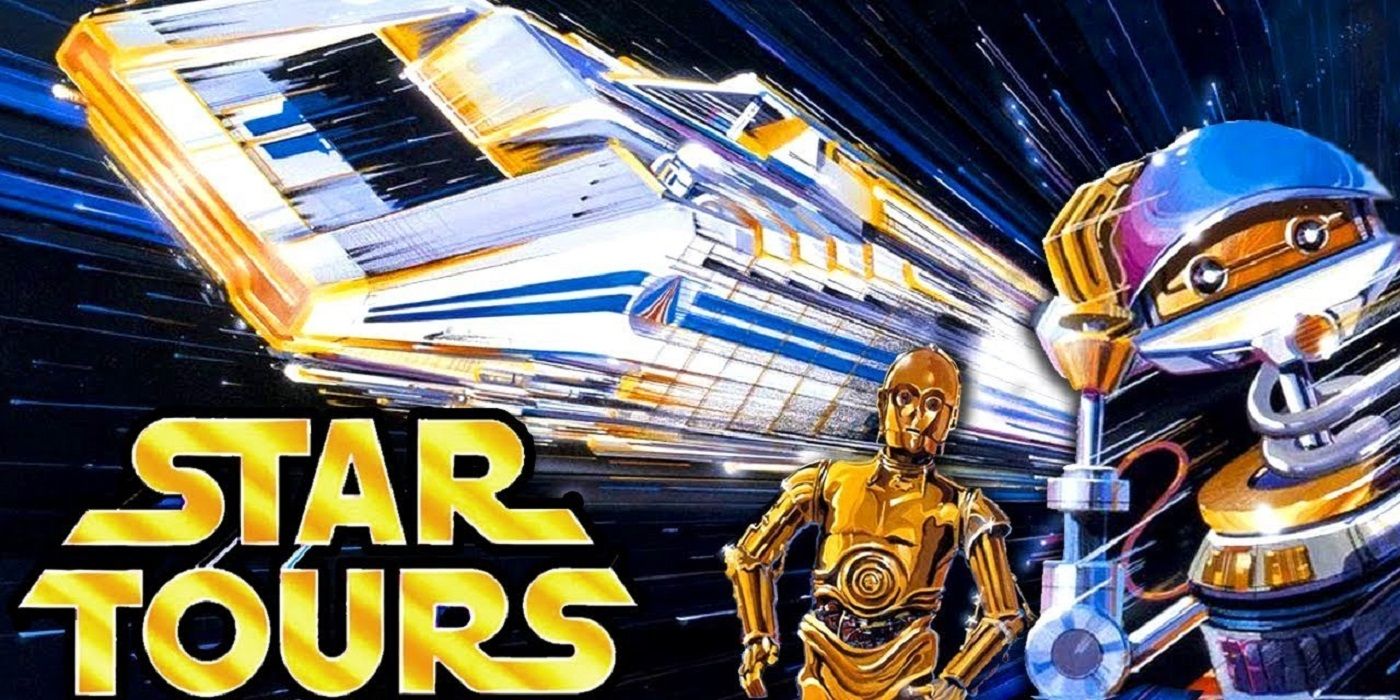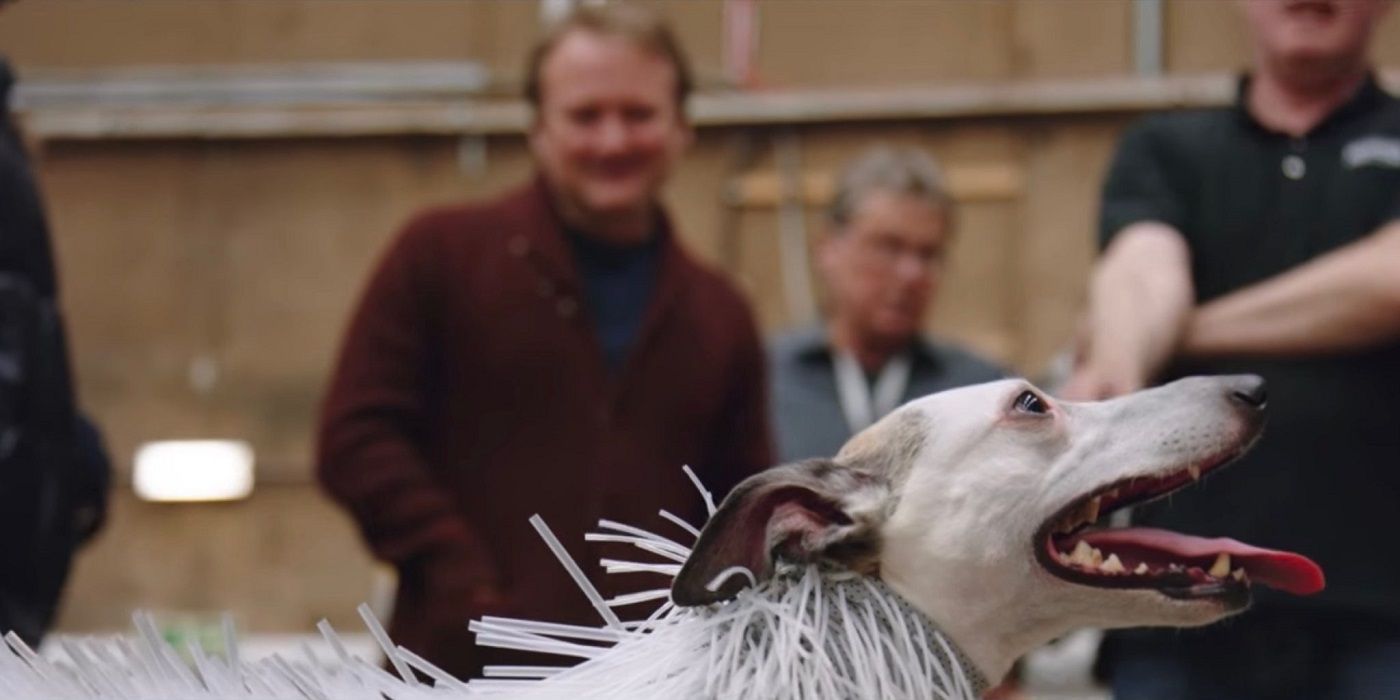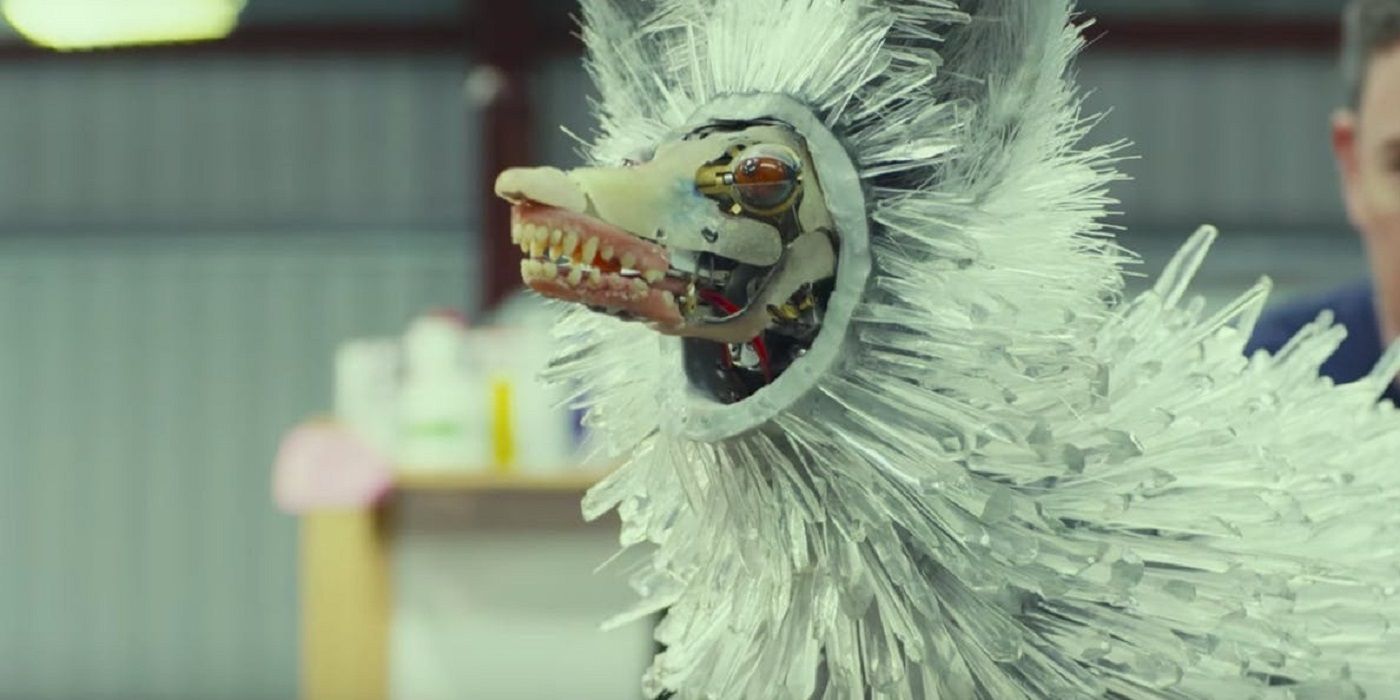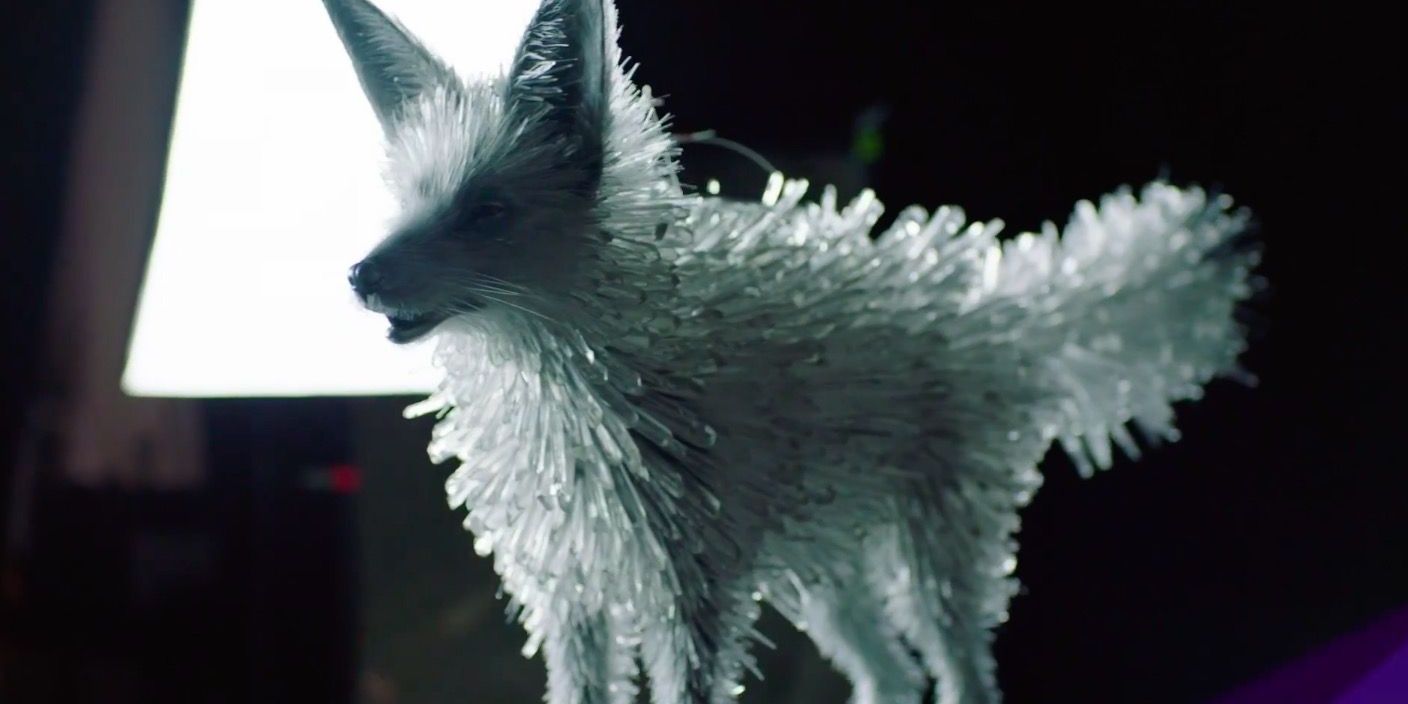Over the years Star Wars has given way for an array of aliens, creatures, characters, and beasts which have inspired both awe (whether it be shock awe or cute "aww") and in some cases hilarity. Whether it be Twi'leks, Ithorians, Wookies, Ewoks, Dathomirians, Rodians, Munns, Ugnaughts, Chiss or even Yuzzums, Star Wars never fails to provide a plethora of fantasy species.
One such species recently introduced into Star Wars are the mysterious Crystal Foxes on Crait in The Last Jedi. Debuting alongside Porgs was always going to be a hard task, but still, the Foxes came out of the film with an air of both cuteness and mystery. Here are 10 facts about these Crystal Foxes you did not know (probably).
THEIR NAME
While Crystal Foxes are an accurate description of the beautiful creature, they do in fact have an official name - Vultpex (or Vultpices for plural).
The name comes from Pablo Hidalgo of the Lucasfilm Story Group. It is derived from the Latin word for fox, Vulpes and also the word vertices which comes from the geometrical field relating to crystals - pretty fitting.
THEIR HABITAT
When the Rebel Alliance abandoned their secret base on Crait it gave way for the Vutpices seen in The Last Jedi roaming through the cave-like structure, seemingly knowing it very well.
Other than the base though Vultpices often habituate caves and canyons as well as tunnels beneath the surface, the kind which seems to be quite prevalent across Crait. It was noted by xenobiologist Dr. Paquin Mesoli (appearing in The Last Jedi: Rose Tico: Resistance Fighter reference book) in his notes of the fox-like beings that in Summer they had dens under the salt crust, while in Winter their dens moved to caverns.
SKULKS
Like all creatures, beasts, and animals, Vultpices have a name for groups of them, similar to a murder of Porgs or a herd of Dewbacks, Vultpices live in skulks.
Vultpices tend to regroup three to four times with there being up to about ten in a group at any one time. Dr. Mesoli did note of the skulks coming together in bigger social constructs, with up to one hundred Vultpices in the one den.
THEY ARE NON-SENTIENT, YET CLEVER
Perhaps unsurprisingly the Vultpex is classified as a non-sentient being, meaning it does not think independently and intelligently. Their status as a creature of the Star Wars 'animal' kingdom makes this almost automatic - although it is noted there is some emergence of sentience within some beasts/creatures namely the Zillo Beast.
Despite this non-sentience however, Vultpices do have the wherewithal and cleverness to form strong bonds with one another in skulks and across them while also being able to hunt in collectivity.
THEY ARE OMNIVORES
But what do they hunt exactly? Well first off, Vultipices are omnivorous - meaning they eat both plant-based food and meat - similar to a Gorgodon or - in Legends - the Sarlacc pit, Womp-Rats, and Tauntauns.
Director of The Last Jedi, Rian Johnson, confirmed on Twitter that Vultpices eat Mole-Mice (when available) and Craithian shrub grass which, despite no physical evidence of them, seems a pretty self-explanatory and common plant to find on Crait.
THEIR FIRST APPEARANCE
While it would be easy to assume the first time Vultpices appeared would be in the film or the trailer, the fact of the matter is it is not true. The Vultpices' first appearance was in fact on the Disneyland simulator ride Star Tours: The Adventure Continues.
The ride which opened in 2011 got additional elements added to it in 2015 to promote The Force Awakens and the same thing occurred two years later. On November 17th, 2017 Crait and Batuu both got added to the ride, Vultpices included.
THEIR FIRST APPEARANCE... IN CANON
The caveat with the Star Tours appearance, however, is that it is not canon. At the same time though The Last Jedi is also not Vultipices first canonical appearance. That honor goes to Star Wars Battlefront II.
Released on November 17th, 2017, Battlefront II promised additional downloadable content - for free - relating to The Last Jedi the month following its release. It did just that on December 13th - the day before the release of the film - adding content from the film including Crait which contained the Vultpices running around the Rebel base.
ORIGINAL CONCEPT DEBATED USING REAL ANIMALS
As audiences can tell, the Vultpices were made completely from CGI. However, initially, the designers experimented with the use of real animals. Designer Aaron McBride detailed how they put a dog in a suit with plastic straws to see how it moved and looked, as detailed in a special feature on The Last Jedi Blu-ray.
It was ultimately decided that using part real-life animals did not capture the beauty that the completely computer-generated design could. The look and movement of the Vultpices were beloved by designers and was a great visual, ultimately CGI was a great choice.
WHY DESIGNERS CHOSE CRYSTALLINE FUR
The most distinguishing factor of the Vultpex is, of course, their crystalline bristles. Head of the creature workshop for the sequel trilogy Neal Scanlon posed, to Empire, the idea that the Vultpices had spent so much time on Crait that they absorbed and took on the very surface they are on, hence the crystalline fur.
As for the behind the scenes choice of crystalline fur, it was an idea stemmed from crystal glass chandeliers and their lumination capabilities as well as their ability to refract. On top of that, they provide light in the dark which was ultimately a way to guide the heroes of The Last Jedi in their final escape.
THE USE OF THEIR BRISTLES
As for what those crystalline bristles are used for they have a variety of purposes. As well as the aforementioned lighting the way for our heroes, Vultpices use their bristles to protect themselves from predators.
On top of this their bristles function to let the Vultpex know if they can squeeze into tight spaces, such as the skulk of them in The Last Jedi. It is also noted by Dr. Mesoli that their bristles are likely used for communication via shaking them to make noise or brushing them against the various rock formations on the planet, creating sound patterns.

